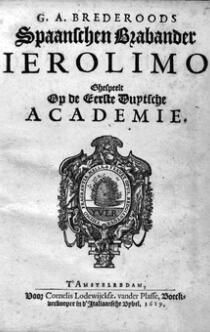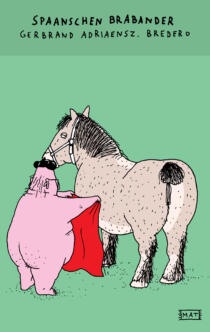Most beggars’ songs arose as immediate reactions to historical events and were always written from the perspective of the rebels. The texts were often written to existing melodies. They were disseminated orally at first and then on loose sheets. Printers quickly collected them into volumes that were continually expanded with new songs. There appears to have been a large market. No less than 33 different editions of the Beggar’s Songbook were published, between 1581 and 1687. Altogether they contain 252 songs.
Beggar’s songs are first and foremost accounts of important events. As such, they functioned as news for the public of the time. For later readers, they offer a unique contemporary record of the different stages of the Dutch Revolt. For this reason, they were published in chronological order in successive versions of the Beggar’s Songbook.
The oldest song is called Illustrious Antwerp, O Imperial City. This song is set in the south during the frightening and chaotic outbreak of the Revolt. It tells of the execution of the reformed preacher and former Carmelite Christoffel Fabritius. He ended up burned at the stake in October 1564. The most recent beggar’s song originated in the time of the confident and prosperous Republic, and tells of the funeral of the “ruler of cities” Frederick Henry of Orange in Delft, the Netherlands (May 1647).
In addition to their function as news, the beggar’s songs also served as propaganda. Not only should the public be informed but also persuaded to choose the side of the rebels and encouraged to resist. They appealed to their listeners to join William of Orange. They also generated sympathy for the victims of Spanish cruelty and jeered at the Catholic Church’s abuses and the Catholic belief in the intervention of saints and in purgatory.
The beggar’s songs were often intended as reminders of important historical events. Since they kept alive the memory of the Revolt, they functioned in the Republic as an ideological binding agent from the seventeenth century onwards.
The most famous text from the Beggar’s Songbook is the so-called Wilhelmus. This song still has a “cohesive” role today. In 1932, this sixteenth-century text and melody was declared the official Dutch national anthem. It is, therefore, the anthem with the oldest text in the world. This beggar’s song resounds at every important event in the Netherlands (from the inauguration of a new monarch to every appearance by the national team at a major football match). For this reason alone, the Beggar’s Songbook plays a vital role in Dutch literary history.






